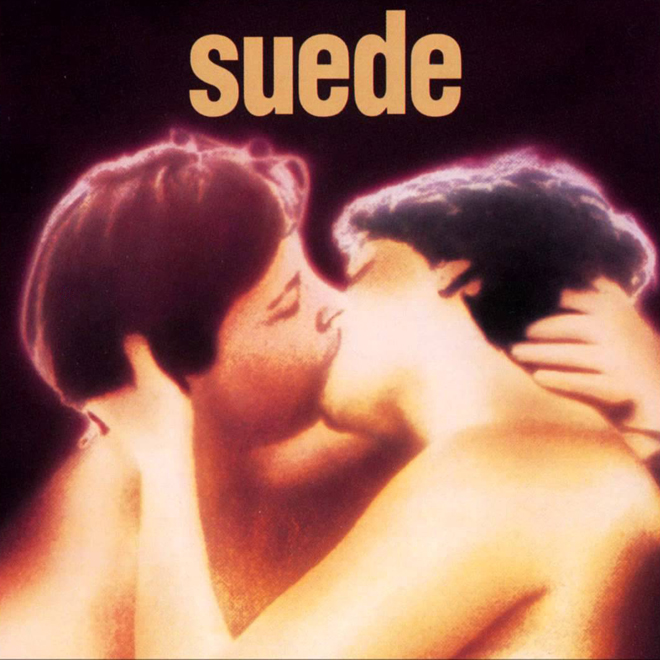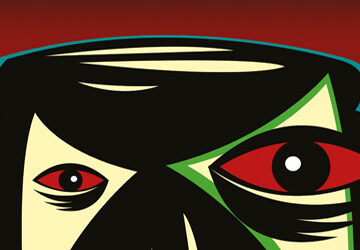Nineties Britpop was dominated by one-word-named bands such as Blur (“Popscene”), Pulp (“Common People”), Oasis (“Champagne Supernova”), and Suede (“Beautiful Ones”), the latter of which prided and basked in the distinction of having catapulted to the center of the burgeoning scene even before releasing their first single. Top that, insatiable ones!
Formed in 1989, in London, England, Suede were a standout among their contemporaries in the nascent stage or even during the pinnacle of Britpop. As what John Mulvey of the iconic publication NME wrote of the then fledgling band: “They had charm, aggression, and… if not exactly eroticism, then something a little bit dangerous and exciting.” This charisma was what endeared Suede to the adoring punters and followers of the rising new genre, which was in essence an extension or offshoot of the previous decades’ arty and sophisticated New Wave.
To date, Suede has released seven studio albums, from 1993’s self-titled to 2016’s Night Thoughts. All of these carried the band’s allure and magic, which emanated as early as the first one. So, in commemoration of its silver anniversary, reacquaint yourself once again with the pristine and amatory beauty of the album simply titled Suede.
Released on March 29, 1993, on Nude Records, Suede debuted at the top of the U.K. Albums Chart, won the 1993 Mercury Music Prize, and thus rightfully regarded as a landmark album in the archives of Britpop. It was also the first of only two albums of Suede that featured the founding guitarist Bernard Butler, who left the band in 1994 due to growing tensions between him and the larger-than-life vocalist, Brett Anderson; but not before whose similarly alluring appeal left an indelible mark, especially on Suede’s first seeds.
Suede opened with the bombastic and electrifying Glam/Pop of the piano-rippled “So Young” which, that early, sonically translated Anderson and Butler’s constant urge to outperform each other. This gorgeous soundclash carried onto the imposing and slashing “Animal Nitrate” – slightly metallic, compelling for its subdued wildness, and oozing with animalistic aural pheromones. The mood turned sentimental, romantic, and even sexier with the slow ballad “She’s Not Dead;” Anderson’s trademark wails and falsettos and Butler’s restless guitar swirls continued to weld into each other heatedly but perfectly well.
Suede then went hyperdrive with the doubly upbeat, tribal, and fuzzy “Moving,” letting the galloping bass lines of Bassist Mat Osman and the frenetic pounding of Drummer Simon Gilbert shine in splendor beside their two frontmen’s respective pyrotechnics. The sparseness of the depressing mid-tempo “Pantomime Horses” returned the listener to the band’s propensity for theatrics and melodrama; after all, this was, according to Anderson himself, written during a very unhappy and sexually unsatisfying moment in his then crumbling relationship with former Suede bandmate Justine Frischmann (eventually of Elastica), who was at the time dating Damon Albarn of Blur. Such Britpop interconnection! For better or for worse, it did not matter, so long as the musical results were grandiose.
Another Tribal-beat-starting track, “The Drowners” was actually Suede’s debut single, which became one of their definitive songs – best characterized, as usual, by Butler’s tuneful riffs and Anderson’s velvety voice. The lights dimmed and hearts ached as the synth-drenched “Sleeping Pills” swayed hypnotically like a slow-moving pendulum in a troubled night. “Breakdown” followed in the same pensive heartbeat, albeit in a more acoustic and bluesy gambit.
Before concluding their first oeuvre, Suede dished out a couple more of their rockin’ stompers – “Metal Mickey” and “Animal Lover” – bursting sharply with their Pop-shiny, metallic guitar sheen, and Anderson’s iron-lung vocal delivery, further abstractifying its lyrical ambiguity.
Finally, Suede left the listener weeping quietly in a corner (and probably craving for more) with the slow, inspired, and heartrending existentialist ballad “The Next Life,” which exuded faint echoes of The Beatles’ “She’s Leaving Home” and featuring again on piano the album’s producer, Ed Buller.
Anderson and the rest of the currently soldiering Suede – Guitarist Richard Oakes, who replaced Butler in 1994; Osman; Gilbert; and Neil Codling (keyboards/rhythm guitar), who joined the group in 1995 – have really come a long way, from their youthful and carefree ’90s heyday to their current cool, calm, and collected character. However, when one talks of the band’s sprightly and stubborn swagger, nothing beats the Suede on overdrive of old. Their self-titled debut will always be the unforgettable statement and indelible testament of this legendary status of theirs. Needless to say, the ensuing albums of Suede all bore the sonic dynamics of the band as a whole.
So now, get your Suede and handle it smoothly, but be sure to crank up that damn volume knob after you have laid the record on the player! Then close your eyes, breathe a sigh, curve a smile, and relive ’90s Britpop all over again via the firstborn of one of the genre’s finest pioneers.






No comment